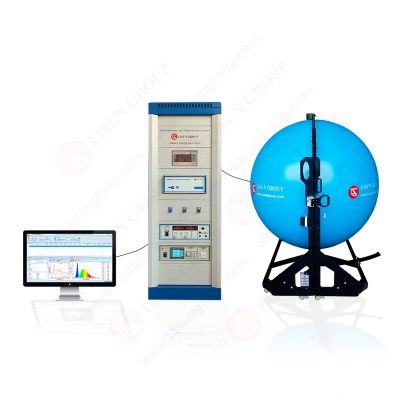Integrating sphere is a light collecting device. Illumination or measurement sources may be made from the gathered light. So, light enters the sphere, reflects off the highly reflective Lambertian surface, and is dispersed evenly throughout the sphere’s interior. A fiber-optic cable gathers a homogenized light signal behind a baffled port within the sphere, irrespective of the sample port’s angular characteristics. The baffle is vital in preventing initial reflections from accessing the detecting fiber.
In order to provide technically acceptable test results, the correct functioning of an integrating sphere system is a challenge. Proper calibration and test setup procedures are required. As a result, measurement mistakes may be difficult to see when using light sources that don’t offer reliable outputs. Measuring the total luminous flux may take a long time, which can lead to human error.
Integrating sphere applications
Radiant flux is collected by integrating spheres and then spatially integrated. If a material sample is contacted by the flux before or after measurement, the flux may be determined. To measure lamp and laser flux directly, or the flux density generated by hemispherical illumination, use a radiometer or photometer with a solid-state sphere.
Using integrating spheres to assess diffuse or scattering materials’ total reflectance or transmittance is one of the most common uses. The port aperture of an internally lit integrating sphere may also be used as a large-area source with uniform brightness, as an alternate use. These light sources may be employed as uniform back illuminators or for calibrating electronic imaging equipment and systems.

LPCE-2(LMS-9000)High Precision Spectroradiometer Integrating Sphere System
Radiometers and photometers
A light source’s total geometric flux or the lighted area’s flux density may be directly measured using an integrating sphere and a photodetector with the proper spectral response. The suitable integrating sphere design is determined by the geometric distribution of the observed light.
The suitable photo detection technology is determined by the light source’s spectral characteristics. The watt is the SI unit of radiant flux and is used by radiometers to measure light. Radiometers are the most frequent use for quantum response photodetectors.
Since their spectrum responsivity varies, optical filters are more suitable in almost all situations, save possibly when the incoming flux is monochromatic, to tune the response to a particular spectral area. Thermal detectors are wavelength-independent. As a result of this characteristic, they are also vulnerable to ambient heat radiation. The input radiation must be adjusted for synchronous detection and the temperature must be regulated.
Integrating spheres are devices that track changes in light’s wavelength over time. Detectors are used in conjunction with some kind of spectrum separation device, such as an interferometer or diffraction grating monochromatic.
Reflectance and transmittance of materials
Reflectance and transmission measurements of diffuse or scattering materials are the most common uses of integrating spheres in measurement. The measurements are usually always made spectrally, in relation to the wavelengths used. The only exception to this rule is if you’ re employing a photopic response detector to measure luminous reflectance or transmission. LISUN has the best integrating spheres for these applications.
Diffuse transmittance is used in ultraviolet spectroscopy to assess the UV resistance of pharmaceutical containers, sun protection gear, and automobile coatings. Paints, textiles, and graphic arts all use the visible spectrum to regulate and quantify their colors. Thermal control coatings and foils used in spacecraft design utilize total hemispherical reflectance (THR) in the infrared to estimate surface emissivity for radiant heat transfer analysis.
Lisun Instruments Limited was found by LISUN GROUP in 2003. LISUN quality system has been strictly certified by ISO9001:2015. As a CIE Membership, LISUN products are designed based on CIE, IEC and other international or national standards. All products passed CE certificate and authenticated by the third party lab.
Our main products are Goniophotometer , Integrating Sphere , Spectroradiometer , Surge Generator , ESD Simulator , EMI Receiver , EMC Test Equipment , Electrical Safety Tester , Environmental Chamber , Temperature Chamber , Climate Chamber , Thermal Chamber , Salt Spray Test , Dust Test Chamber , Waterproof Test , RoHS Test (EDXRF) , Glow Wire Test and Needle Flame Test .
Please feel free to contact us if you need any support.
Tech Dep: Service@Lisungroup.com , Cell/WhatsApp:+8615317907381
SalesDep: Sales@Lisungroup.com , Cell/WhatsApp:+8618917996096
Your email address will not be published. Required fields are marked *